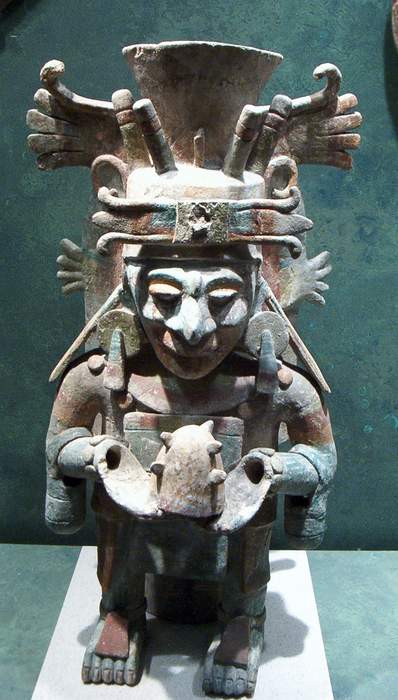The Mayan fascination with
origin, medicine and understanding of disease was firmly bonded to religion. In
an effort to explain how disease came to humanity, the Mayan’s assigned certain
attributes to their collection of gods. Among their pantheon of gods, each one
represented some aspect of daily life, including, medicine, maternity
malignancy, rain, earth and death. An knowledge of each of these gods’ role in
Mayan culture and religion would allow for remedies to be produced that would
follow the beliefs of the society.
In order to explain to
themselves the idea of conception and fertility, for example, women would pray
to one of the more prominent female deities, Xichel. This goddess is
interesting as she is actually a creator god, Itzamna, or at least a part of
him. Depending on the time period and location in Mesoamerica, Xichel could be
the wife of Itzamna or the female version of him. It is through their union
that thirteen other gods are created which so lead to further specialization
between gods. Women worshiped the goddess when they were attempting to bear
children. Ixchel, more specifically, is a goddess that embodies various roles
in Mayan Society including, as aforementioned, Midwifery, and by relation,
Marriage. Both as Ixchel, or as one of the many other unclassified names
associated in other pre-Colombian Mesoamerican cultures, the goddess is
depicted as a maturing woman that ages with the waning of the moon, and so, is
also a Moon goddess. Her role as goddess of the moon and fertility go together
due to planting season being dictated by Moon Cycles; the Mayans would see the
harvest and planting season as the Earth’s most fertile time to plant or the
earth giving birth to the food which they then consumed. Her role as rain
goddess also justified agriculture means, although she is not considered a
goddess of agriculture. It was believed that as she grew older, she
emptied the water filled vase, which she carried, over the earth and so rain
was produced. In one particular month, zip, she held a special
position as a goddess of Medicine during which she shared the position with her
male counterpart, Itzamna.
Itzamna: the Mayan creator deity attributed as the overseer of medicine.
Itzmana is similar to
Xichel in that his role as a patron of Medicine is fluid and depends on
particular timing, which is actually consistent with Xichel’s month as goddess
of Medicine during the month of zip. Unfortunately, much
information has been lost on the permanent patrons of Medicine. It cannot yet
be determined if the names known now, Ahau
Chamahez and Cit-Bolon-Tum, are independent gods, or possible manifestations of
Itzamna. Regardless, what we are able to deduce is that these patrons of
medicine were extremely important to the ah-men’s goals of
treatment, cure, or possibly even malignancy.
An artist's (Dustin DeWitt) portrayal of Ah Puch: the god of death and the Underworld
In a case in which an ah-men felt
in anyway offended or found cause to do so, he could be capable of being
an ah-pul-yaah. This means that the shaman could cause some
form of plague or disease within a person. Death and disease
themselves had their own deity-forms in the Mayan religion. The gods Ah
Puch/Humhau, ruler of the underworld, and Cizin Kisin, an earthquake god, were
the overseers of death. According to a Mayan tale known as the Twin
Heroes, disease originated from houses that the two gods presided over.
However, the same tale also tells us that after the defeat of the Underworld in
totality, the powers of the underworld were severely reduced.

